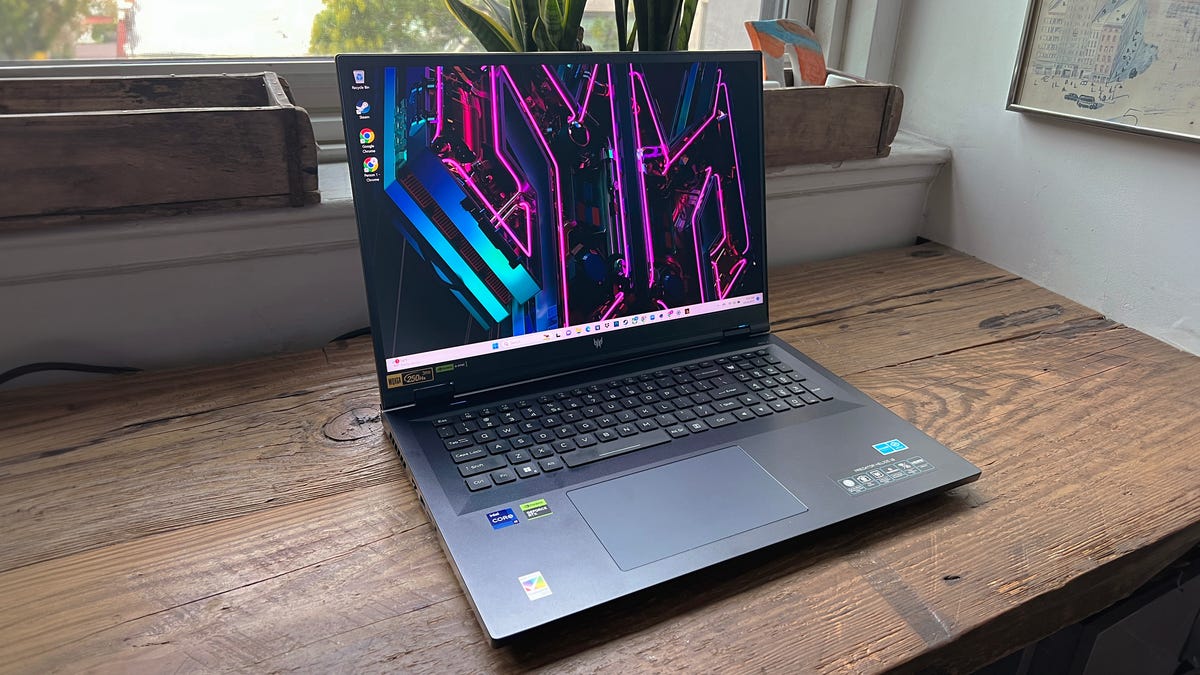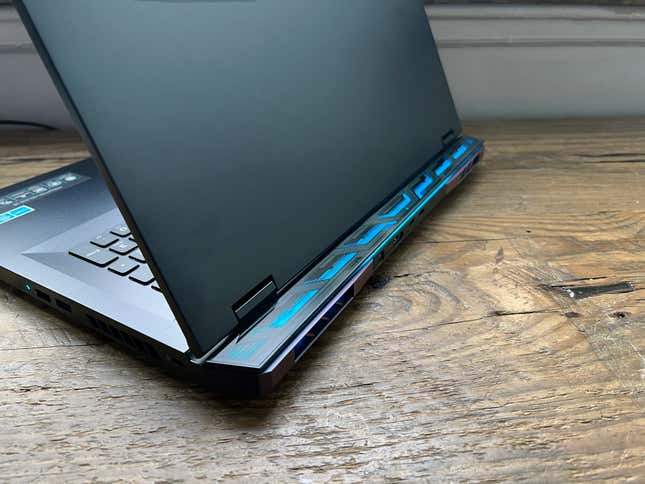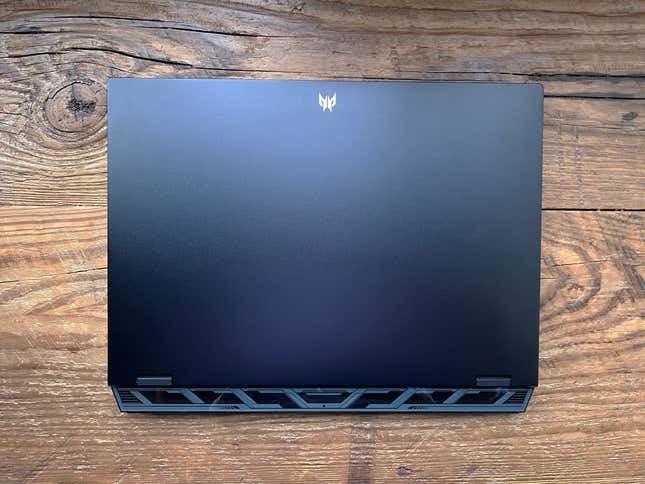
This is the third 18-inch gaming laptop I’ve reviewed in 2023 (although the first for Gizmodo). It’s a trend that’s hopefully going to stick around well into the future, as having access to an almost desktop-monitor-size screen, plus top gaming components, is exactly what laptop gamers need right now.
Many recent gaming laptops have shrunk down to 15-inch screens, which can be more portable and less expensive, but the overall experience pales in comparison to playing the same game on a bigscreen TV through a $500 PS5 or Xbox Series X. Bumping your laptop screen up to 18 diagonal inches makes games feel much more immersive, as I discovered when playing new games like Starfield or Baldur’s Gate 3.
The configuration tested here features an Intel Core i9-13900HX CPU, Nvidia RTX 4080 GPU, 32GB of RAM and a 1TB SSD.
I’ve previously tested 18-inch systems from Alienware and Razer, and both of those brands have their fans. Configuring each system as identically as possible, both the Acer Helios 18 and Alienware M18 can be had for around $2,999, while the Razer Blade still charges a hefty premium of almost $800 more. To be fair, it’s the nicest design of the bunch, but it’s not $800 much nicer.
Note that Best Buy currently has this model on sale for several hundred dollars off, but it shows up as currently out of stock. If you can snag one at this discounted price, it’s a no-brainer. There’s also a $1,999 version (on sale at Best Buy right now for $1,699) with an Intel i7-13700HX, 16GB RAM, an Nvidia RTX 4070 GPU and 1TB SSD.
Design and build quality
Considering the Acer Helios lid houses a huge 18-inch screen, it’s impressively flex-free. The matte black body picks up a few fingerprints here and there, but the overall look is sophisticated and keeps the entire thing from looking too gamer-y. That said, I prefer some of the more interesting color options I’ve seen in some Alienware laptops over the past few years, including a very sharp-looking matte white.
The lid hinges are inset, leaving a portion of the body behind it when the clamshell is open. This gives the system better balance when open and allows for more efficient cooling. The little bit of the laptop that extends from the rear holds many of the system’s ports and connections, including the power port and two USB-C ports, and it has some built-in lighting that’s nice without being intrusive.

Other ports are on the left and right sides, including a rarity these days, an ethernet jack, plus a total of three USB-A ports and a microSD card slot. A massive power brick provides 330W of power, so be sure to make room in your bag for it if you plan on toting this thing around (it won’t game for long off the battery, which is typical for gaming laptops).
That big display
The real star here is the 18-inch QHD+ IPS display. It’s a miniLED panel with a fast 240Hz refresh rate, which is great for competitive gamers.
Of course, even with the Nvidia 4080 GPU, playing new games at the highest detail levels at the max 2,560 X 1,600 resolution will keep you closer to 60-100fps in something like Starfield.
Playing games, editing photos or web surfing, the screen was bright and crisp, although I kept the brightness cranked up most of the time. A 1,920×1,200 resolution version is also available, but that feels low for an 18-inch screen designed to sit so close to your face.
Performance and gaming
A combination of factors help this system be one of the fastest I’ve tested. The Intel Core i9-13900HX processor is part of Intel’s HX line, which are nearly desktop-level 55-watt chips (compared to Intel U-series chips found in super-slim or budget laptops, which are rated at 15 watts).
My current PC go-to games are Starfield and Baldur’s Gate 3, both of which can be challenging to run at high resolutions and high detail settings. We also ran, among other benchmarks, 3D Mark Time Spy to compare this to other high-end gaming systems, and 3D Mark Wild Life Extreme just to show how it compares to non-gaming laptops.

If you’re looking to spend less on a gaming laptop, that’s easy. You can find something like a 15-inch Dell G Series and a configuration with an Intel Core i7 and Nvidia RTX 4060 for under $1,500. If you’re going all-in on an expensive system that will last you through the next few generations of games and gaming hardware, I love the big screen, high-end components and the fact that this makes a great all-day, every day computer that feels more like a semi-portable all-in-one PC than a laptop.
See all the latest hardware news and reviews from Gizmodo here.
Credit : Source Post





